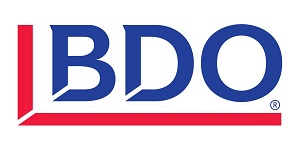
 Special to the Philanthropy Journal
Special to the Philanthropy Journal
By Laurie De Armond and Adam Cole
Nonprofits have always faced myriad challenges balancing the pursuit of their mission with long-term financial and operational stability, but those issues have been exacerbated in recent years by advances in technology, regulatory shifts and globalization. Complicating matters further, these economy-wide changes have contributed to increased demand for nonprofit services and the upheaval of traditional funding methods – and nonprofits are feeling the strain. Data from our 2019 Nonprofit Standards Benchmarking Survey, which polled 200 leaders across the sector, reinforces that message – respondents cited variability in funding (70 percent), followed by rising overhead costs (66 percent) and staff retention and recruitment (66 percent) as the biggest challenges they will face in the next year.
While each of these issues requires attention and targeted strategic planning to address, it is vital to consider how they fit into the bigger picture – and intertwine with each other – in order to make the structural adjustments needed to thrive in today’s environment. Systemic underfunding is both a cause and a symptom of many of these issues, leaving many nonprofit organizations vulnerable to a phenomenon known as the starvation cycle.
 Understanding the Starvation Cycle
Understanding the Starvation Cycle
The starvation cycle occurs when nonprofits chronically underfund vital infrastructure like technology and employee training in pursuit of low overhead or indirect costs and high programmatic spend percentages. The impulse to do this is understandable. Nonprofits face significant pressure, both internally and externally, to direct the vast majority of their spending toward programming. Programmatic spending has increased in recent years as nonprofits have risen to meet the increasing demand for services due to domestic and global humanitarian crises such as homelessness, hunger, healthcare and environmental impact. Conversely, there is a perception among some funders in the industry that funding non-programmatic costs is undesirable because it doesn’t directly impact the cause.
This is reflected in the findings from Nonprofit Standards, where more than 7 in 10 respondents reported spending 80 to 100 percent of their budget on program-related activities. Organizations pride themselves on spending the vast majority of their funding on their programs. While that is good in theory, it often prevents them from making necessary investments in infrastructure that can keep them operating efficiently. Though high programmatic, or direct, spending may signal an organization’s dedication to their mission to donors and stakeholders, operating programs with thin margins at the expense of investment in the organization can leave nonprofits vulnerable to liquidity issues and ultimately jeopardize their long-term viability.
Organizations are especially vulnerable if they lack operating reserves (liquid net assets free of donor restrictions) to act as a financial safety net. In our survey, 63 percent of nonprofits reported less than six months of operating reserves – and 33 percent have zero to four months on hand, up from 23 percent of last year’s respondents. This could be cause for alarm.
However, as we have noted in years past, the “right” amount of liquidity varies according to organization size, sector, and scope. There are even cases in which a nonprofit may choose to maintain fewer reserves in order to make strategic investments. We generally recommend that nonprofits strive to maintain at least six months of operating reserves as a best practice. Without an appropriate amount of reserves, a sudden drop in funding could spell disaster for an organization.
Recognizing the Impacts of Starvation
Beyond the financial implications of the starvation cycle, one of the biggest operational manifestations of chronic underfunding is the challenge nonprofits face with employee satisfaction, and thus recruitment and retention. Regardless of its scope or mission, a nonprofit’s greatest resource is its people – and attracting and retaining talent can be tough with limited resources. In order to maintain a steady pipeline of talent, nonprofits need to combat the perception that it is difficult to be both personally and financially fulfilled working in the sector.
Compensation is certainly one element of employee satisfaction. Seventy-eight percent of organizations rate compensation as a moderate or high challenge when it comes to employee satisfaction, along with employee training and development (68 percent of respondents).
However, compensation is not enough: Employees also value their connection to the mission of the nonprofit. Nearly one in four organizations (24 percent) ranked a disconnect from the mission as a high or moderate employee satisfaction issue. This may be of even more importance when an organization is financially strapped — more than one third of organizations that experienced net loss in revenue last year rank disconnect from the mission as a high to moderate challenge, compared to 21 percent of those with net income.
It’s clear that nonprofit employees value both the financial and social aspects of nonprofit work; savvy organizations will need to effectively address this both to gain and keep top talent. In order to do so, they must ensure appropriate investment in their employees – and transparency with their employees and donors regarding their financials.
Taking Steps Toward Systemic Change
While there is still work to be done in raising awareness of the starvation cycle across the industry and combatting the perceptions around overhead costs, nonprofits can take the following steps to help address this issue for themselves and their peers in the industry:
- Find the Right Balance: Nonprofits must keep in mind that program expansion is not always the right choice. Maximizing impact in a sustainable way often comes down to making smart decisions about which programs are right to fund – and which ones most effectively advance an organization’s core mission – without impacting long-term sustainability. The key to dealing with the starvation cycle is to make sure an organization is set up to weather potential fluctuations in funding, which means balancing operational and programmatic – or indirect and direct – expenditures with maintaining enough reserves to keep the lights on, if necessary.
- Understand and Communicate Your Needs: To do so, nonprofits must understand what indirect or non-programmatic spending is necessary to maintain long-term sustainability. When seeking funding, organizations must make the indirect cost model appropriate to their individual business structure, rather than trying to meet a one-size fits all indirect cost rate. Once an organization has done so, it’s then vital to articulate these needs to funders. Too often, nonprofits are afraid to push back on the terms of a grant or make the case for funding that allows them to both run their programs and maintain long-term viability. By practicing transparency, providing concrete details and making their case, organizations are more likely to receive the funding they need to not only run their programs, but also ensure their continued ability to support their mission.
- The Importance of Benchmarking: One of the factors perpetuating the starvation cycle is the stigma surrounding it. To move the discourse forward, nonprofits should connect with their peers in honest, transparent conversations about how they address their “non-programmatic spend” and their cost allocation processes for these indirect costs. Alignment across nonprofit organizations will be vital to change perceptions in the industry. Nonprofits should seek out opportunities to connect with and directly benchmark themselves against other organizations – not to compete but to ensure they are adopting industry best practices that support the organization in the most cost- and time-efficient manner.
The world needs nonprofits to continue pushing for positive change, and for donors – both institutional and individual – to continue to support them in their efforts. For that to happen, nonprofits need to keep their long-term viability top of mind. Addressing the issue of systemic underfunding – and retaining satisfied employees – are key metrics of success in combining a nonprofit’s mission-driven heart with a business mindset. Overcoming the stigma around the starvation cycle will ultimately help both nonprofit organizations work together with their employees, community members and stakeholders to continue to make the world a better place.
Laurie De Armond is co-Leader of BDO USA’s Nonprofit & Education practice and an Assurance Practice Office Managing Partner. She may be reached at ldearmond@bdo.com.
Adam Cole is co-Leader of BDO USA’s Nonprofit & Education practice and Managing Partner of the Greater New York Nonprofit and Employee Benefit Plan Practices. He may be reached at acole@bdo.com.




